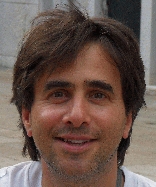
Laboratoire des Sciences et Techniques de l'Information, de la Communication et de la Connaissance
Lab-STICC Lab. / UMR CNRS 6285
Computer Science Department
Département Informatique
20 avenue Victor Le Gorgeu
CS 93837
29238 Brest Cedex 3 - France
https://labsticc.univ-brest.fr/~rodin/index_en.html

